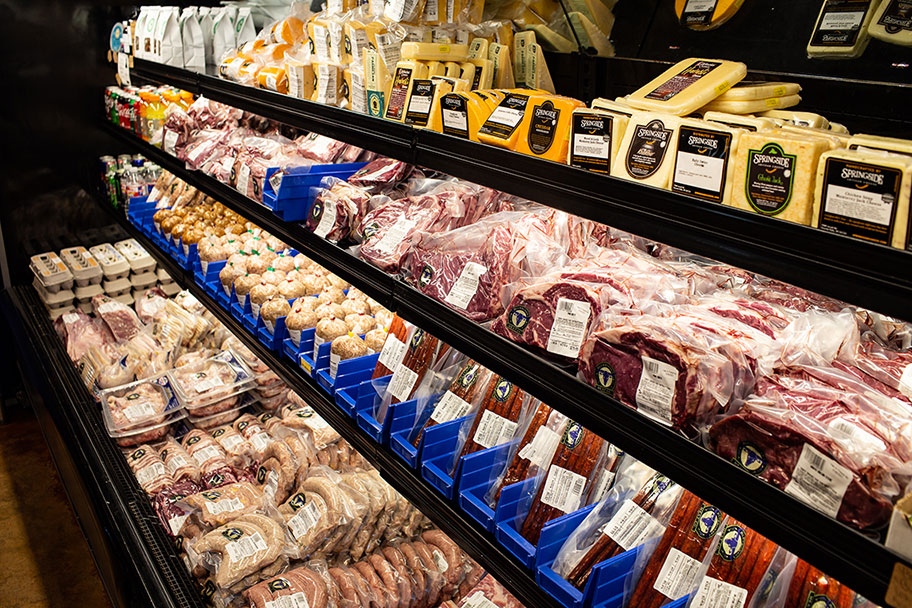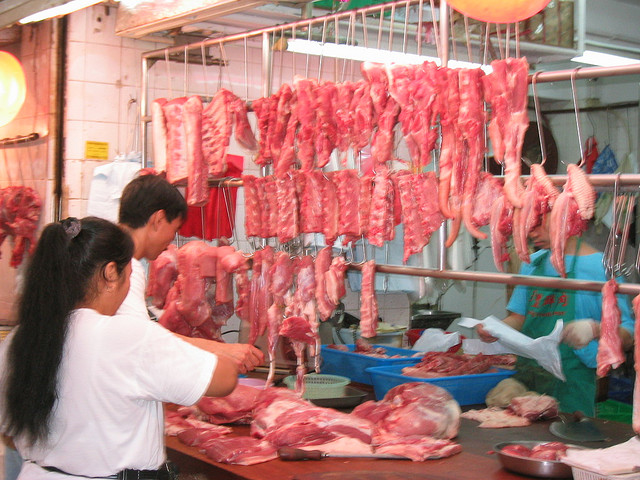Delve into Bagley Farms Meat Market: Quality Meats, Unmatched Taste
Wiki Article
Your Comprehensive Source for Professional Tips on Browsing the Meat Market Scene and Making Enlightened Purchases
Navigating the globe of meat buying can commonly really feel like a complex maze, with different cuts, qualities, and tags including layers of intricacy to the decision-making process. For those seeking to make educated selections and raise their culinary experiences, understanding the nuances of the meat market scene is vital. From deciphering the difference between prime and option cuts to unwinding the enigmas behind numerous qualifications, a wide range of expert tips awaits those going to decipher the tricks of the butcher's domain. By grasping the art of choosing fresh, quality meat and discovering to engage efficiently with butchers, people can not only improve the flavors on their plate but also make confident choices that straighten with their worths and choices.Recognizing Different Cuts and Grades
When it involves purchasing meat, understanding the distinctions between numerous cuts and grades is essential for making educated options at the marketplace. The cut of meat refers to the specific muscle mass group where the meat is sourced, while the quality is a quality classification based on aspects like marbling, tenderness, and maturation of the animal. Prime grade meats have the highest possible level of marbling, making them tender, juicy, and savory, yet they also often tend to be much more pricey. Choice quality meats are a little leaner with less marbling yet still offer high quality for a lower cost point. Select grade meats have the least marbling, making them leaner yet potentially less tender. It's vital to consider the food preparation approach when selecting a cut and grade of meat-- for instance, well-marbled cuts like ribeye are fantastic for grilling, while leaner cuts like sirloin might be better fit for toasting or braising. By recognizing the differences between qualities and cuts, consumers can make more educated choices when acquiring meat.Selecting Fresh and Quality Meat
To guarantee optimal preference and security in your dishes, it is important to thoroughly pick fresh and top quality meat when buying at the market. When choosing fresh meat, look for cuts that have a vivid color, firm appearance, and are not slimy yet damp.Inspecting for ideal labeling, such as USDA grades or accreditations, can additionally ensure you of the meat's quality and security. By being cautious in your selection process, you can appreciate delicious and risk-free meals made from fresh, top quality meat.
Decoding Labels and Certifications
Recognizing the tags and certifications on meat products is important for making notified choices concerning the quality and origin of the meat you buy. When browsing the meat market scene, it is essential to seek labels such as "USDA Certified Organic," which indicates that the meat was created complying with stringent natural requirements without the usage of artificial chemicals, antibiotics, or hormones. Another key label to view for is "Grass-Fed," which implies the animals were fed a diet plan mostly including lawn or forage. This tag usually shows a leaner item with greater degrees of omega-3 fatty acids.

Qualifications like "Animal Welfare Authorized" or "Certified Humane" indicate that the pets were raised in gentle conditions, with accessibility to outside rooms and ethical therapy. On the other hand, "Non-GMO Task Verified" suggests that the meat comes from pets that were not fed genetically modified microorganisms. By understanding these qualifications and labels, customers can make more moral and sustainable options when purchasing meat products.
Involving With Butchers for Assistance
Making informed options about the meat you get can be further improved by looking for assistance from seasoned butchers who have beneficial understanding concerning different cuts, high quality, and sourcing techniques. Butchers are proficient professionals that can supply insights into the very best cuts of meat for specific meals, advise additional hints different options based on schedule or spending plan, and offer suggestions on correct handling and storage to maximize quality additional info and flavor.Engaging with butchers enables consumers to ask questions about the source of the meat, consisting of whether it is in your area sourced, natural, grass-fed, or sustainably elevated. By fostering a connection with a trusted butcher, customers can get a much deeper understanding of the meat they acquire, ensuring that it aligns with their preferences and values.
In addition, butchers can share cooking tips, recipe recommendations, and even butcher special cuts to satisfy private preferences. Their expertise extends beyond just selling meat; they can aid in dish planning, portion sizing, and offer suggestions on complementary ingredients to create all-around and delicious meals - Bagley Farms Meat Market. By leveraging the knowledge and experience of butchers, customers can make even more educated decisions when navigating the meat market scene

Making Best Use Of Worth and Budgeting
When taking into consideration making best use of worth and budgeting in the meat market, it is important to evaluate the cost per offering and discover cost-effective cuts that still provide great flavor and quality. By understanding the cost per serving, customers can make educated anchor decisions concerning which cuts of meat supply the very best worth for their budget plan. One way to take full advantage of value is to buy larger cuts of meat and section them in your home, conserving money contrasted to pre-cut choices. Additionally, choosing less preferred cuts, such as chuck or sirloin, can use substantial financial savings without jeopardizing on preference or tenderness when prepared appropriately.It is additionally beneficial to build a relationship with regional butchers or meat vendors, as they might use unique bargains or price cuts to dedicated consumers. By being conscious of price, exploring alternative cuts, and leveraging discounts, customers can extend their meat spending plan without giving up top quality.
Verdict
In conclusion, understanding the different cuts and grades of meat, picking fresh and quality products, decoding labels and certifications, seeking guidance from butchers, and making the most of value and budgeting are important steps for browsing the meat market scene and making informed purchases. Bagley Farms Meat Market. By following these expert tips, customers can make knowledgeable decisions when purchasing meat and guarantee they are obtaining the most effective value for their cashWhen it comes to buying meat, understanding the differences in between numerous cuts and qualities is vital for making informed selections at the market. The cut of meat refers to the certain muscle mass group from which the meat is sourced, while the quality is a high quality designation based on variables like marbling, tenderness, and maturation of the animal. It's essential to consider the cooking approach when selecting a cut and quality of meat-- for instance, well-marbled cuts like ribeye are terrific for barbecuing, while leaner cuts like sirloin may be far better matched for roasting or braising.Comprehending the tags and qualifications on meat products is essential for making informed decisions about the top quality and origin of the meat you acquire. When navigating the meat market scene, it's vital to look for labels such as "USDA Qualified Organic," which indicates that the meat was generated following rigorous organic requirements without the use of synthetic chemicals, antibiotics, or hormonal agents.
Report this wiki page